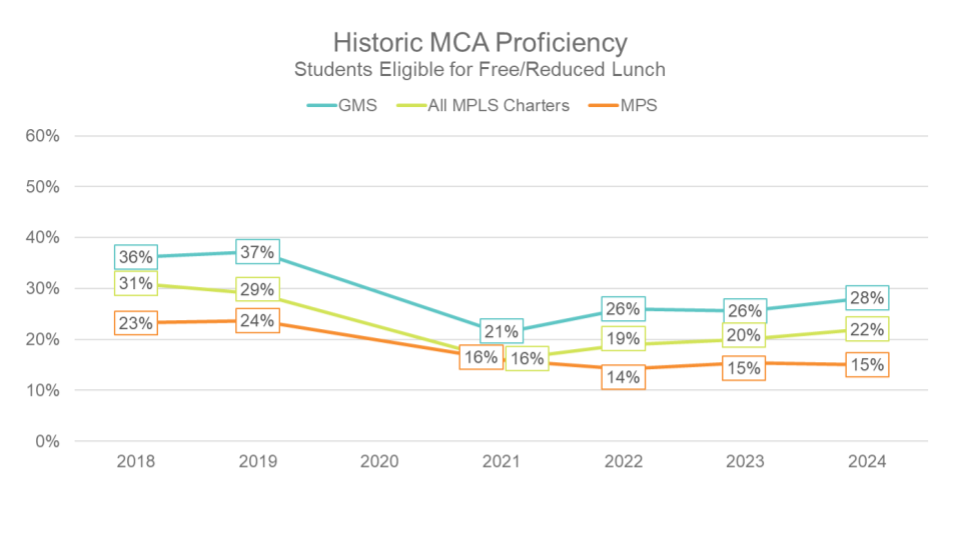
Great schools have the power to change lives. For families who have not historically had access to opportunities, a quality education is a prerequisite for a pathway out of poverty. We also believe that while many schools are working tirelessly to deliver on this promise, too many schools – both district and public charter – are failing students. As a community we need to demand better of the educational systems and structures that are failing our children. The latest Minnesota Comprehensive Assessment (MCA) results show a persistent opportunity gap. Only 32% of black and brown students are meeting math and reading standards compared to 57% of white students.
Highlighting the challenges
Recent reporting in the Star Tribune highlighted the many problems with charter schools in Minnesota. The problems they noted – including a lack of accountability, effective governance, and frequent closures are real, and they have impacted too many families, educators and students. These challenges should be urgently addressed through policy solutions that include additional accountability structures for both authorizers and charter schools, and revisiting regulations that limit charter operational flexibility.
Recognizing the successes
That being said, it is inaccurate to say that charter schools – as a model – are a failure. Some of the highest quality schools in our state are charter schools. For example, Nova Classical Academy in St. Paul is one of Minnesota’s highest performing schools, serving a student population that is 40% students of color, maintaining a graduation rate of over 90 percent, with over 55 percent of graduating students accepted at selective colleges and universities. And in many urban communities, charter schools are often the best option available for black and brown families. That’s why over 70% of people of color are in favor of charter schools according to a 2022 Minneapolis public opinion poll.
When you disaggregate MCA data by demographics, 2024 data shows that the average proficiency rate of low-income students in charter schools is 50% higher than the proficiency rates of this same population in Minneapolis Public Schools. While we have optimism that the current Minneapolis Public Schools leadership are well-positioned to address the performance gaps in Minneapolis, the reality is that, for many low-income students, a charter school is their best option at present. We should be looking for opportunities to provide district schools with the flexibility to quickly adapt their programming to the unique needs of their students.

Schools meeting the needs of students who need it most
Schools like Global Academy and Exploration High School are two examples of charter schools that are meeting the needs of students who need it most. Global Academy has consistently appeared on the Star Tribune’s list of schools that “beat the odds” with nearly 60% of students at grade-level proficiency despite having one of the highest rates of students who qualify for free and reduced lunch. Global Academy is in high demand, especially among the Somali community, with a 600 person waiting list. Exploration High School, founded in 2021, serves a student population that is 60% students of color and boasts a 96% attendance rate – demonstrating how a school can create a sense of belonging and excitement for learning.
Demanding better for our students
Still, we can’t overlook that not all schools, including many public charters, are not living up to the needs of their students. Our goal should be to ensure that every school has the tools and support it needs to succeed. When schools, regardless of their model, are empowered to make decisions that meet the needs of their students and families, educators and students alike can thrive. There are inspiring district and charter schools across our state. It’s time to learn from these schools and embrace new approaches that prioritize student-centered decision-making, allocate resources equitably, and push for greater autonomy coupled with responsibility for student outcomes. We should hold all schools accountable for the results they are getting for students, and demand better for our students.